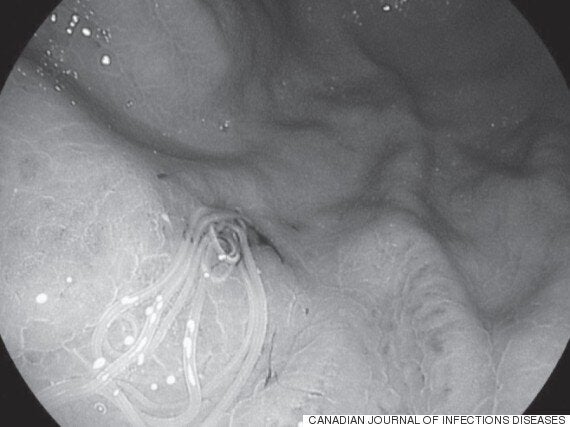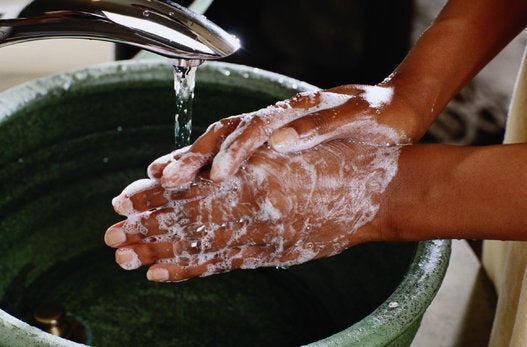If you consider yourself an amateur sushi chef, watch out — there might be worms lurking in that piece of raw salmon or tuna.
An Alberta man was the first known person in Canada to be infected by a rare, parasitic worm after he made sushi with raw salmon purchased at a grocery store.
The 50-year-old was admitted to Calgary's South Health Campus in August 2014 with severe abdominal pain and vomiting, according to a paper published in the Canadian Journal of Infectious Diseases and Medical Microbiology.
The man had eaten raw, wild salmon purchased at a Canadian grocery store chain just hours before.
Warning, this part is not for the squeamish.
An x-ray showed an anomaly in the man's stomach, and after a camera was sent down his esophagus, doctors quickly spotted the cause.
Small, one or two centimetre ≈were burrowing into the man's stomach lining.

An endoscopy shows the parasitic worms burrowing into the man's stomach. (Photo: Can J Infect Dis Med Microbiol. 2015 Nov-Dec; 26(6): 297–298./The Canadian Journal of Infectious Diseases & Medical Microbiology)
The worms were surgically removed — according to the paper, if the condition was left untreated, the worms could have burrowed further in the stomach lining, causing long-term complications.
Can raw salmon be eaten safely?
Ideally, sushi aficionados should stick to dining in restaurants. There, the fish is usually flash frozen to -35 C, according to Alberta Health's sushi preparation guideliens. Sushi chefs are also trained to recognize the distinctive "watch-spring coil" shape of worms in raw fish, which can be tricky for an amateur to spot.
If you insist on preparing your own sushi or sashimi at home, the paper's authors have some advice: "freeze the fish for seven days at −20 C or at a lower temperature for a shorter period of time (less than −20 C for four days)" to kill any nasty parasites.
Unfortunately, many home freezers don't go below - 20 C, so unless you're willing to upgrade your home equipment, it might be best to leave sushi to the professionals.


Also on HuffPost:
